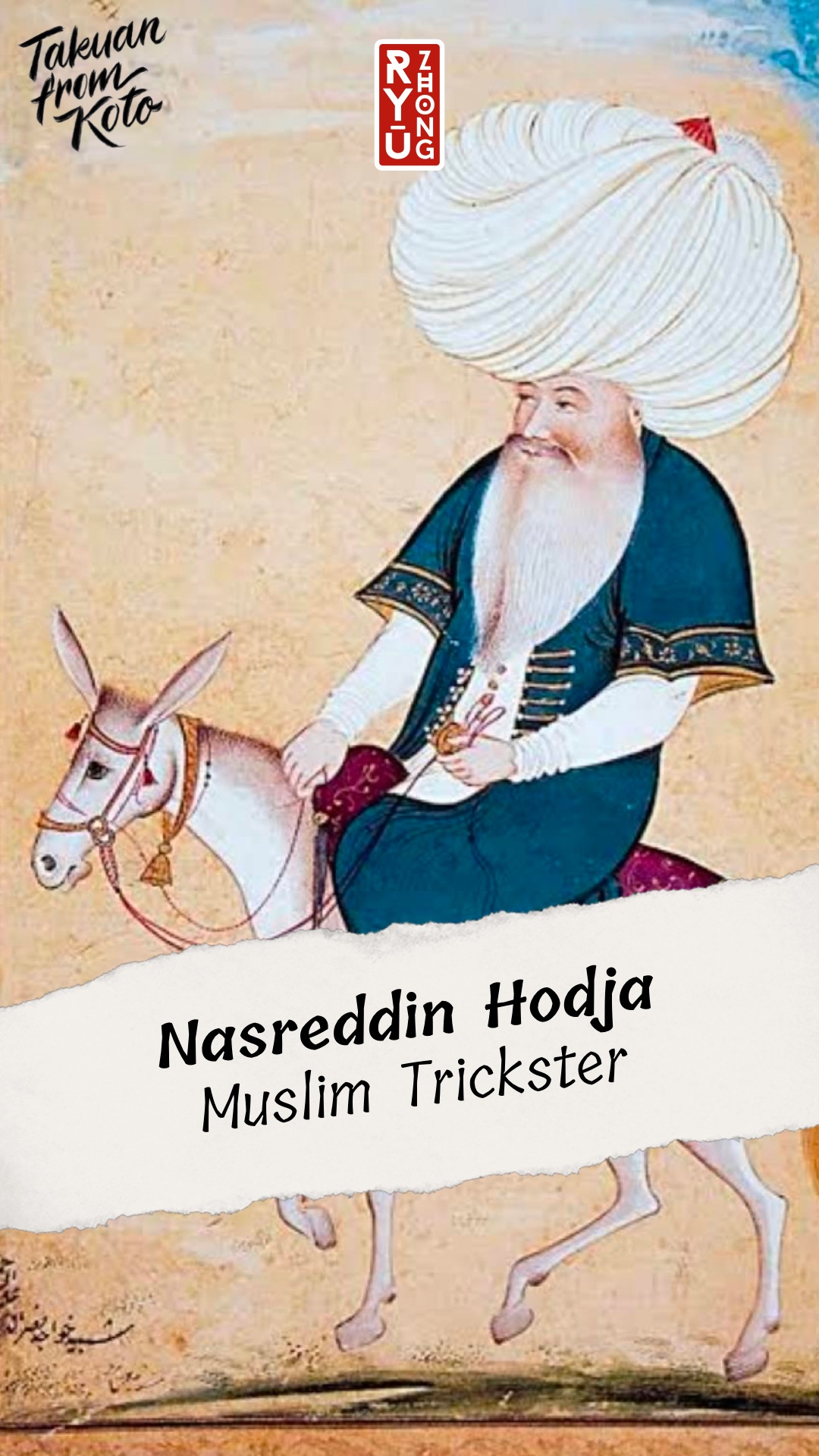
¶ Nasreddin Hodja
Nasreddin Hodja is a character in the folklore of the Muslim world from the Balkans to China, and a hero of humorous short stories and satirical anecdotes.
He is portrayed as a wise fool, clever simpleton, or instructive prankster.
¶ Coincidental Timing
The oldest manuscript of Nasreddin dates to 1571, which is coincidental with both ‘Journey to the West’ and the first chapbook about Till Eulenspiegel. Moreover, Nasreddin frequently is compared with this northern European trickster.
¶ Reference to the Tropes and Style
Nasreddin appears in thousands of stories, sometimes witty, sometimes wise, but often, too, a fool or the butt of a joke. A Nasreddin story usually has a subtle humour and a pedagogic nature.
Superficially, most of the Nasreddin stories may be told as jokes or humorous anecdotes. They are told in the teahouses and caravanserais of Asia and in homes and on the radio. But it is inherent in a Nasreddin story that it may be understood at many levels. There is the joke, followed by a moral and usually the little extra which brings the consciousness of the potential mystic a little further on the way to realisation.
¶ Reference to the Main Character, Takuan
There is no mistake, Takuan and Nasreddin have a lot of common, not only between themselves but also with other tricksters. Both of them use pranks based on human vices, yet Nasreddin is somewhat wiser than Takuan which is quite reasonable: after all, Takuan is a teenager, and Nasreddin Hodja (this title means ‘teacher’) almost always sports a nice beard.